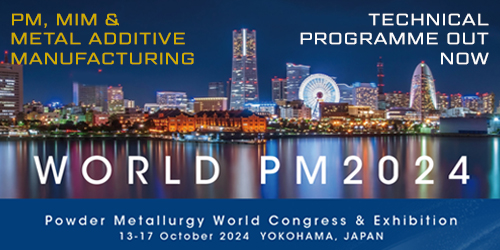What drives the success of an industry: chance or strategy? Lessons from the growth of Metal Injection Molding in China
In March 2007, the very first issue of PIM International featured a review of Metal Injection Molding in Asia. China’s MIM industry was estimated as having around twenty MIM firms, many modest in size and of limited capability, with Taiwan accounting for another fifteen. Fast forward less than fifteen years, and Greater China now accounts for half of global Metal Injection Molding production, is a leader in MIM-grade powder production, and is home to a host of production equipment manufacturers. Industry consultant Dr Chiou Yau Hung (Dr Q) assesses just what happened to drive this success: good fortune, good strategy, or a slice of both? [First published in PIM International Vol. 15 No. 4, December 2021 | 10 minute read | View on Issuu | Download PDF]
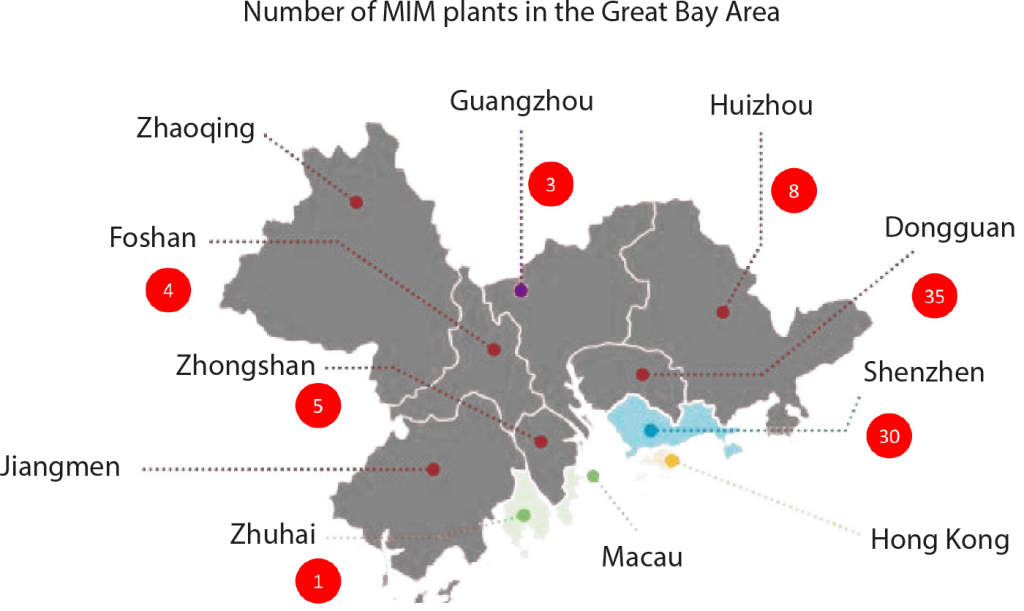
When Apple launched its new iPhone 13, we were very happy to see that parts produced by Metal Injection Molding still featured heavily. While the company’s requirements for MIM parts are very demanding across the board, this is especially the case in terms of part complexity, tolerances and appearance. It is in the latter – in a part’s aesthetic features – where the capabilities of MIM products can often be best demonstrated. Their excellent metallic appearance and surface finish, in addition to a variety of special capabilities unique to certain alloys, all available at a relatively quick production speed, are some of the key factors in MIM’s rise in popularity. And the technology’s progress shows little sign of slowing, with the new generation of folding smartphones relying on metal injection moulded hinges to deliver stable, long term performance.
I believe that we are all curious as to the reasons driving the rapid growth of the MIM industry in Greater China – including mainland China, Taiwan, Hong Kong, and Macau – in the last decade. Is success down to being in the right place at the right time, to a series of coincidences, or can individuals and governments, through strategic goals or individual efforts, drive the success of an industry? Here is my analysis.
MIM plants in a major economic zone
In mainland China, there are two major triangular economic zones – the Pearl River and the Yangtze River deltas. Together, these are home to almost the entire capacity of Chinese manufacturing. Within the Pearl River Delta, the Greater Bay Area (GBA) represents nine cities from the Guangdong province, as well as the entirety of the Macau and Hong Kong regions (Fig. 1). This is the world’s most populous bay area – greater than San Francisco, New York, and Tokyo – and alone represents one of the largest economies in the world. The GBA hosts the greatest number of MIM plants in Greater China.
The GBA is also home to a leading manufacturing innovation city: Shenzhen. While the region faces increasing competition for low-cost manufacturing from Southeast Asian countries such as India and Vietnam, as well as in rapid research and development for innovative electronics from Europe, the United States, and Japan, the industry here naturally aims to keep its name relevant through its MIM technology capabilities. With the ability to meet the needs of a large number of orders in a short amount of time, it slots into place with the product development and mass-production methods already established in the GBA.

Without knowledge, there is no power: outstanding teachers as the catalyst for success
The dissemination of knowledge is crucial when considering whether a new technology can be adopted by a region. I joined the MIM industry in 1991, one afternoon during the first week of my master’s degree, and, after thirty years in the field, I have come up with a list of the three most respected educators from Greater China who have played a key role in nurturing and developing the talent that enabled the industry’s success.
Prof Kuen-Shyang Hwang

Prof Kuen-Shyang Hwang (Fig. 3) teaches in the Department of Materials Science and Engineering, Taiwan University. He returned to Taiwan in 1988 from the United States, where he began his MIM research. All of Prof Hwang’s teachings and research are related to PM and MIM, an area in which he has mentored many students, many of whom are now in the MIM industry. Among these is Dr Y C Lu, Professor Hwang’s first PhD graduate, of Taiwan Powder Technology Co., Ltd. (TPT). TPT was the first company in Asia to produce MIM 3C products on a large-scale production order.
In terms of technical contribution, Prof Hwang was the one who advocated ASTM F75 alloys for smartphones; this alloy has since been used in the camera frames of over 500 million smartphones since 2016. He has published two textbooks, Powder Metallurgy (3rd ed.) and Metal Injection Molding (2nd ed.), both of which are widely used in industry and academia. However, he has often said that, while we can record our knowledge in such books, we should better appreciate the real-world skills, know-how and experiences which are key to making things happen and keeping the MIM industry strong and vibrant.
Prof Shun-Tian (Paul) Lin
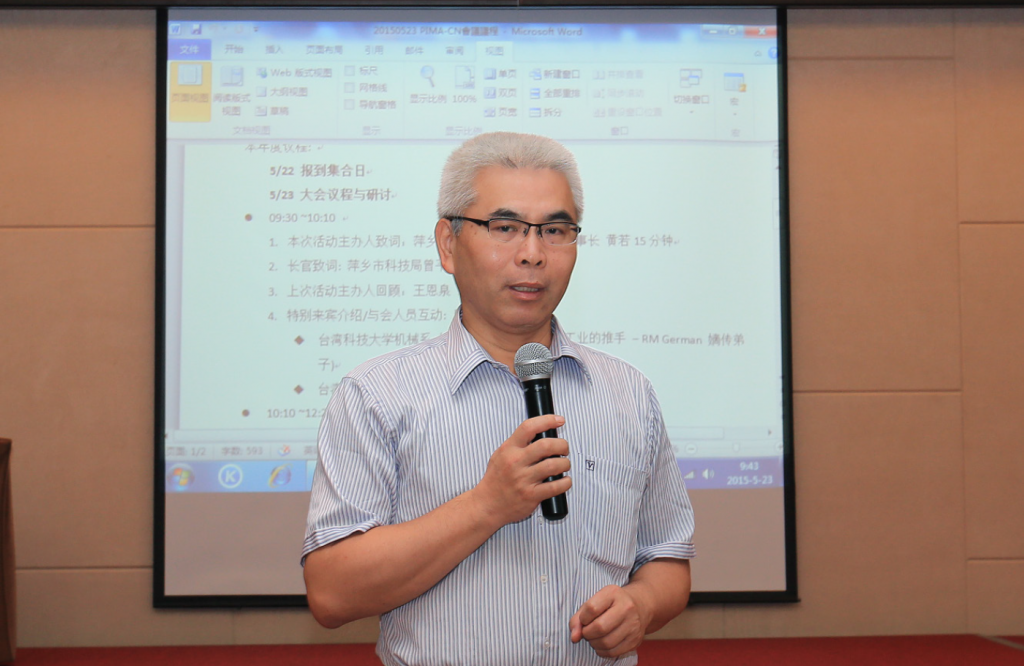
Prof Shun-Tian Lin (Fig. 4) teaches in the Department of Mechanical Engineering, Taiwan University of Science and Technology. He returned to Taiwan from the United States in 1991 to promote the MIM of iron, stainless steel, copper and carbides, as well as ceramics. My master’s and PhD courses were guided by Prof Lin. His highest achievement is bridging the gap between PIM research and industry. Using his in-depth knowledge of a wide range of materials, he has guided many companies in Greater China to successfully integrate MIM and CIM technology into their products.
Prof Xuanhui Qu
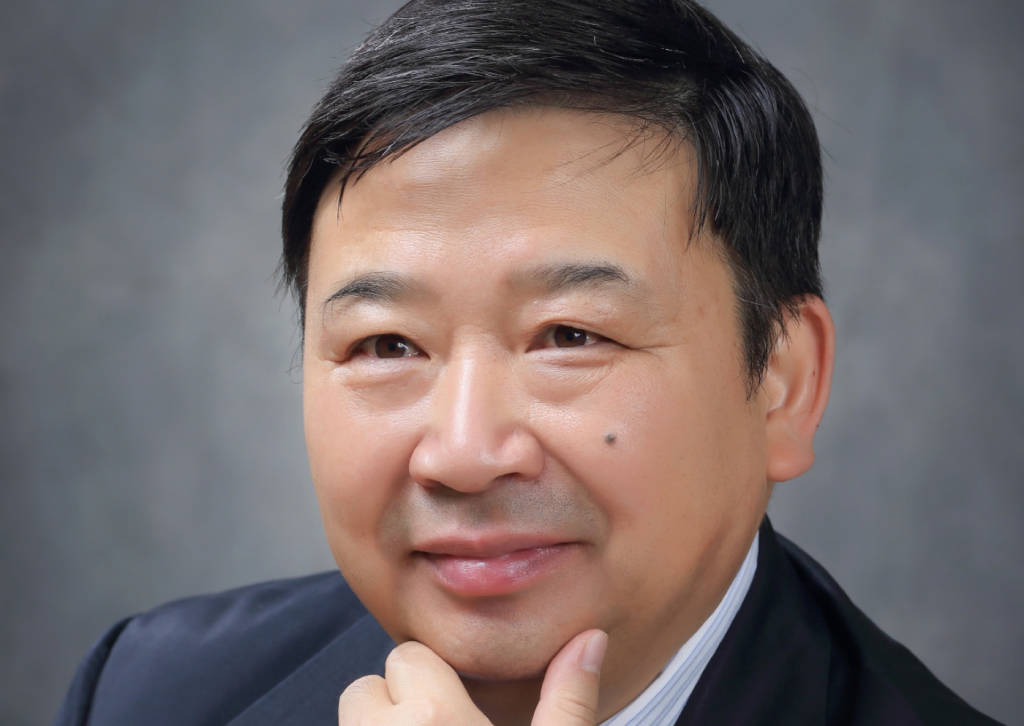
Prof Xuanhui Qu (Fig. 5) teaches Powder Metallurgy at the School of Materials Science and Engineering, within the University of Science and Technology Beijing. He is a Chinese-educated scholar who, since the beginning of his professorship in 1992, has trained over one hundred postgraduate students, many of whom are active in the MIM industry, including engineers, CTOs and CEOs. He allows students to guide their own work – something very admirable amid potentially rigid academic life. Today, he is the president of the MIM Association of the China Powder Metallurgy Alliance (CPMA), as well as the president of Powder Metallurgy Committee of the Chinese Society of Metals. He has served as Editor in Chief of the journal Powder Metallurgy Technology, the longest-running Chinese PM journal, since 2010.
Government initiatives as a driver of R&D
As early as 1996, MIM was identified as one of the key technologies for the future of China’s manufacturing industry. MIM research and development programmes have been continuously supported by government programmes such as the National Natural Science Foundation of China (NSFC), the National High-Tech R&D Program of China (863 Program), the National Basic Research Program of China (973 Program), and the National Key Research and Development Program of China, to name just a few.
With the support of these R&D programmes, great progress has been made in basic research, from alloy selection, to binder design, fundamental process research and so on. The success of this basic research has established a substantial foundation for the rapid development of China’s MIM industry.
Coincidental timing
In life, some things develop naturally, and some are helped along by luck. The successful development of industrial technology also needs coincidence. These are some of the ‘coincidences’ that I believe had an impact on the development of MIM in China.
The winter crisis that catalysed massive infrastructure development
In early 2008 in China, a severe winter blizzard paralysed transportation and affected hundreds of millions of people preparing to return home for the Chinese New Year. The weather also worsened the ongoing economic depression at that time, as workers were left unable to return to their workplaces. Following this crisis, the Chinese government began to focus on the improvement and construction of the country’s transportation infrastructure – power networks, communications, roads, railways, and water supply. After ten years of construction, the foundations of the relevant transportation systems had been transformed.
Connected with this, the MIM industry found the opportunity to benefit not only from increased government funding, leading to rapid adoption by a variety of sectors, but it also directly benefited from the new, faster, more efficient transportation networks.
Smartphones drive business opportunities

The rise of MIM technology can be viewed in parallel to the rise of smartphones. With perhaps the same global impact as the adoption of fire, smartphones have changed human civilisation. They allow unprecedented information transmission and clearer, more widespread communication than ever before. Of course, this universal electronic device needs to be strong, functional and aesthetically appealing. MIM products provided the necessary structural strength for this whilst having the desired aesthetically appealing appearance (Figs. 6–8).
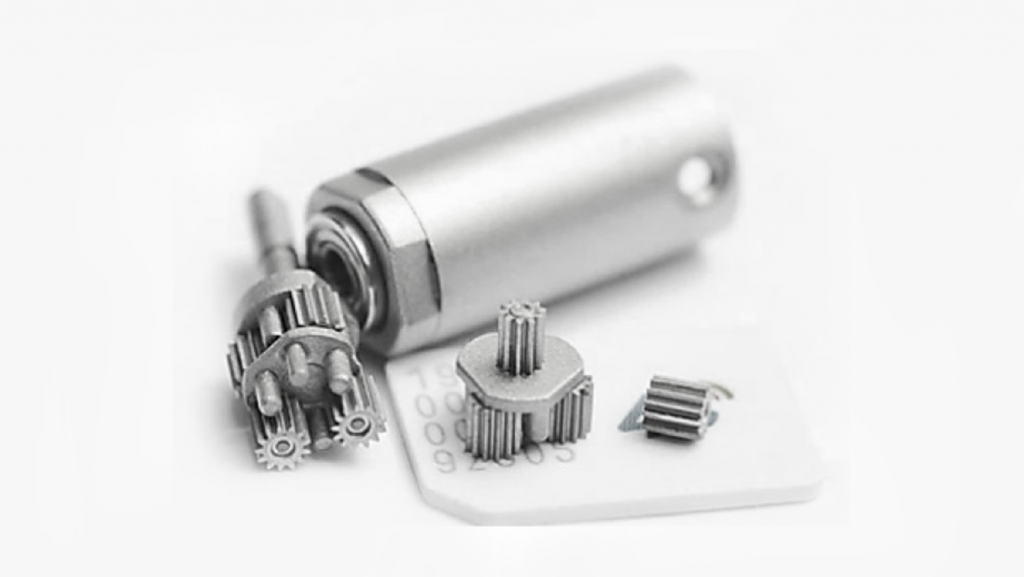
The COVID-19 pandemic, the US/China semiconductor trade war, and the wider semiconductor crisis led to reduced smartphone production, resulting in a reduction in the demand for MIM parts for this application. This resulting spare capacity led to an immediate production shift in Greater China. Small smartphone parts were replaced by components for domestic products, often larger in size. This shift was in part possible thanks to the low cost of Chinese MIM powders. This, combined with low domestic transport costs, has allowed raw materials and products to be produced nearer the point of demand, without the need for international shipping. The MIM industry in Greater China has, in this instance, proven itself resilient.

Energy conservation and carbon reduction: an opportunity to challenge other processes
By the end of 2021, countries around the world will begin a new wave of energy regulation. This gives the MIM industry a powerful business opportunity as a relatively energy-efficient manufacturing process. MIM is highly flexible and offers many advantages for small parts manufacturing, especially in comparison to processes with high energy consumption and a negative environmental impact, such as die casting, lost-wax casting (investment casting), traditional casting, forging, etc (Fig. 9).
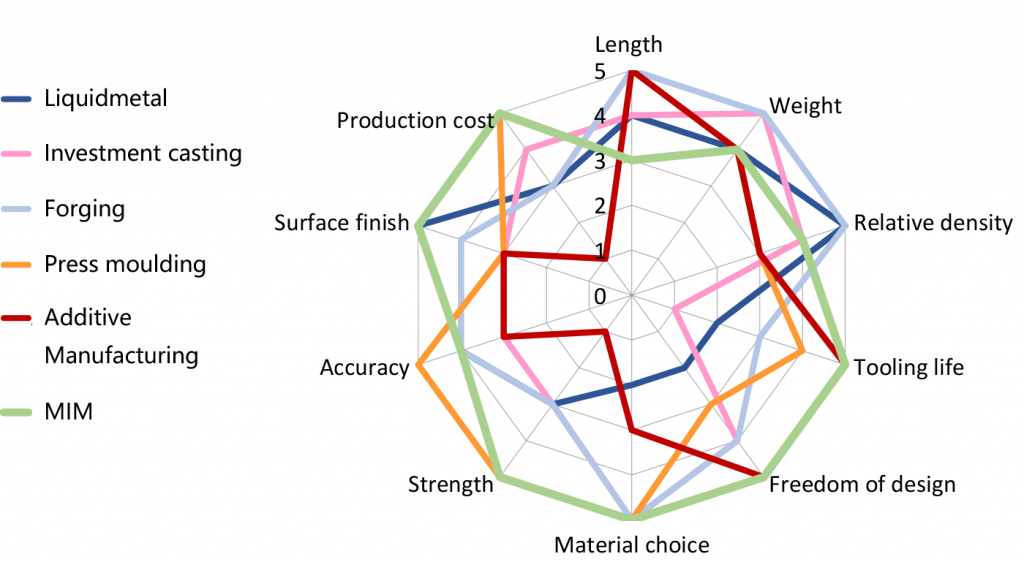
The rise and rise of domestic equipment suppliers
The localisation of MIM equipment production began in about 2011 and hasn’t stopped since. More than five generations of batch vacuum sintering and debinding furnaces were developed in only a decade. The invention of oxalic acid catalytic debinding by Shenzhen SinterZone technology Co., Ltd. in 2014 was a big step towards reducing the environmental impact of the MIM debinding process. Ningbo HIPER Vacuum Technology Co., Ltd. advanced its batch vacuum sintering furnace technology to six-zone temperature control. Continuous sintering furnaces have also been manufactured for five years by Hiper and SinterZone.
All these equipment innovations have been based on a desire for greater environmental protection, CO2 reduction, energy conservation, and safety. In addition to furnace technology, innovations have also been introduced that automate feedstock kneading and granulation, saving on labour costs.
The high-volume production of MIM powders
One could be mistaken for thinking that the materials used by MIM today are based on quite long-established specifications such MPIF Standard 35. Don’t overlook the fact that, historically, industrial powder production had never been able to atomise high percentages of d50 < 15 µm fine powder. The production of MIM grade powders is as high as ever. At least ten powder manufacturers in China produce more than 2,500 tons of MIM powder a year – there is even one small factory with a single atomiser, yet it can also produce 250 tons of MIM powder a year. This easy sourcing of raw materials has therefore also been a major boost for MIM’s development.
Rapid, efficient tooling removes the barriers to MIM
Greater China has a lot of plastic injection moulding companies, meaning there are also quite a few corresponding injection moulding tooling factories. Although the tooling used for MIM and plastic injection moulding are different, a ‘general’ injection moulding tooling factory may still have experience manufacturing some sets of MIM tools. Moreover, these factories can quickly learn the specific manufacturing expertise needed for MIM tools, and expand production.
Today, a record number of rapid tooling producers exist with the ability to complete a set of four-cavity moulds within seven days, in order to provide prototypes to customers. Perhaps this is the main reason why the MIM industry does not use additively manufactured rapid prototypes. Many tooling factories in Greater China already operate highly efficient and automated ‘lights out’ production – this is a real enabler of the fast delivery times offered by the MIM industry.
Outlook and expectations
Although MIM technology has only existed for around half a century, it has been promoted in Greater China since 1985. The fortuitous combination of the many events and circumstances presented here has resulted in the Chinese MIM industry accounting for half of the world’s production. What is clear is that well-funded R&D centres, connected to industry by high-profile ‘technology champions’, all operating within a defined strategic national framework, can result in what, by any standards, is a major success story.
While many people still don’t know MIM by name, its products have followed people into their smartphones, cars and domestic appliances. MIM technology is a multi-step combination of traditional industrial technologies. Each step requires careful learning, observation, recording and operation. Due to its unique human resources and the nature of business in Greater China, the MIM industry has been able to adapt itself into just what its customers need.
Of course, it is not always ‘plain sailing’: equipment manufacturers are working day and night, both to fulfil equipment orders and develop new equipment, and many MIM factories use the current intermittent power supply situation to complete customer orders – including the author himself, as I write this manuscript. Welcome to Greater China and its MIM family!
Author
Dr Q (Y H Chiou)
You neeD Technical Office






